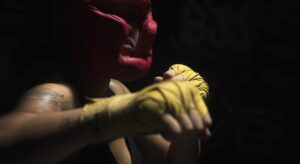The Olympic Games were revived in the 19th century by French social activist Pierre de Coubertin. The main idea of the revival of the games was the idea of a general truce for the duration of the competition. That is why the motto of the “new” Olympic Games was: “The youth of the world were to measure their strength in sports competitions, not on the battlefields”.
The I Summer Olympic Games were held in Greece on April 6, 1896. The first modern games were attended by 331 athletes from 11 countries, all men. Our compatriots, unfortunately, did not participate in those games.
Athletes competed in only nine sports. It is interesting that at the beginning of the XX century Olympians competed in tug-of-war. The hero of the first Olympics was the winner of the marathon, the Greek letter carrier Spyros Louis. Long-distance running was literally his specialty.
Twenty-eight years later, the I Winter Olympics were held. They were held in the town of Chamonix, a famous French ski resort. You may ask: Before that did not hold major competitions in winter sports? Since 1901, the Scandinavian countries held their own Nordic Games. Therefore, the idea of holding the Winter Olympics did not come true for a long time. The Nordic countries were against it because they had their own winter games, and the southern countries were against it because they had no conditions for winter sports.
Still, in 1924, 293 athletes came to Chamonix, including 13 women. The program included five winter sports: skiing, speed skating, figure skating, bobsledding, and hockey. Interestingly, the opening ceremony was attended not only by athletes, but also by local residents.
Twelve-year-old Sonja Henie performed at the games in Chamonix. However, the figure skater from Norway won the last place at that time. During her career Sonja Henie would become a three-time Olympic champion and one of the most famous figure skaters. She also starred in movies. One of the most famous films with her participation is “Sun Valley Serenade”.
Olympic traditions
The first Olympic Games of the modern era established the tradition of these competitions. Thus, at the I Olympics in 1896, King George I of Greece announced the opening of the games. This ceremony established two Olympic traditions: the opening of the games by the head of state, where the competitions are held, and the performance of the Olympic anthem.
Citius. Altius. Fortius. Faster. Taller. Stronger. That’s the motto of the Olympic Movement. It also has its own emblem and flag. The flag is a white cloth with Olympic rings. The Olympic rings are the emblem of the Olympic Games. The rings symbolize the five continents: Europe, Africa, America, Asia and Australia.
The Olympic mascot is also part of the symbolism of the games. The first mascot appeared in 1968 at the Olympics in Grenoble, France. It is usually depicted in the form of an animal associated with the organizing country.



